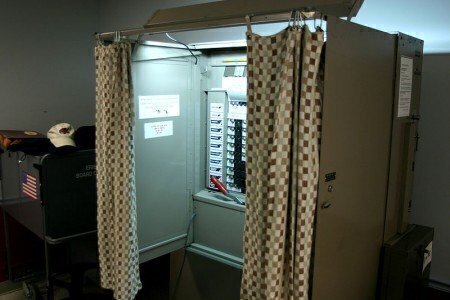Voters in about a dozen states head to the polls tomorrow to help select the next presidential nominees in a ritual called Super Tuesday. So how did we get this primary season free-for-all and why does it matter?
The last question is the easiest to answer. On March 1, 2016, about 22 percent of all convention delegates for the Democrats and 25 percent for the Republicans will be picked on the same day. No other primary election day in the 2016 cycle has the bulk of delegates, although March 15 and June 7 are other dates with a lot of delegates at stake.
But Super Tuesday, through several generations of tradition, has taken on its own legendary personality, with campaigns made or broken on the national stage.
An early Super Tuesday of note was in 1976, when six primaries were held on Tuesday, May 25, with Gerald Ford and Ronald Reagan each taking three states in the Republican race. In the 1980 campaign, seven primaries and caucuses were held on March 11, 1980.
But at the time, the name “Super Tuesday” was also used to describe the final Tuesday of the primary season in June, when a key group of states that included California and New Jersey cast votes.
The 1984 campaign was seen as starting the modern movement toward a more sweeping Super Tuesday in March using a concept known as “frontloading” the primaries. Nine states were in play on March 13, 1984, as Walter Mondale took Georgia and survived the loss of seven states to Gary Hart to remain in the presidential campaign and get the nomination at the Democratic national convention.
Four years later, the event was being called the Southern Super Tuesday as 21 states, mostly from the South, had elections on March 8, 1988. For the Democrats, Michael Dukakis managed to win five states despite his liberal, New England heritage. The Dukakis showing blunted any effort for a regional candidate to leverage his connections. Bill Clinton then became the first Southern candidate to take advantage of a grouping of Southern primaries in 1992, sweeping the South on Super Tuesday and completing a comeback that had started in New Hampshire.
The 1996 Super Tuesday was dominated by Bob Dole in the Republican races, and in 2000, George W. Bush and Al Gore took part in a March 7, 2000 Super Tuesday that featured California and New York; both candidates cemented their front-runner status with strong performances. In 2004, John Kerry took nine of 10 Super Tuesday contests in March to lock up the Democratic nomination.
The contentious 2008 election saw 24 states move their primaries to Tuesday, February 5, in an effort to sort out the front runners early by putting about half of the delegates in play on the same election day. Instead, Barack Obama and Hillary Clinton would up in a virtual delegate deadlock for the Democrats. The GOP front runner, John McCain, was able to gain enough delegates to force his top rival, Mitt Romney, from the race.
Romney had his revenge in 2012, when he used a strong March Super Tuesday showing to keep him momentum, leaving him with one final candidate, Rick Santorum, to contend with for another month.
This year, Donald Trump and Hillary Clinton will try to use Super Tuesday, followed by the March 15 primaries, to end the primary season early.
The Republican Party has 12 states in play on Super Tuesday, representing about 25 percent of all delegates sent to the GOP convention. The GOP uses a mixed set of rules to select delegates in a “winner-take-most,” and in a proportional fashion. For the Democrats, about 22 percent of all convention delegates are selected for the national convention on Super Tuesday, with 11 states, American Samoa and overseas delegates in play.
By March 16, about 50 percent of the Democratic delegates and 60 percent of the Republican delegates will have been at stake in primary elections and caucuses.








